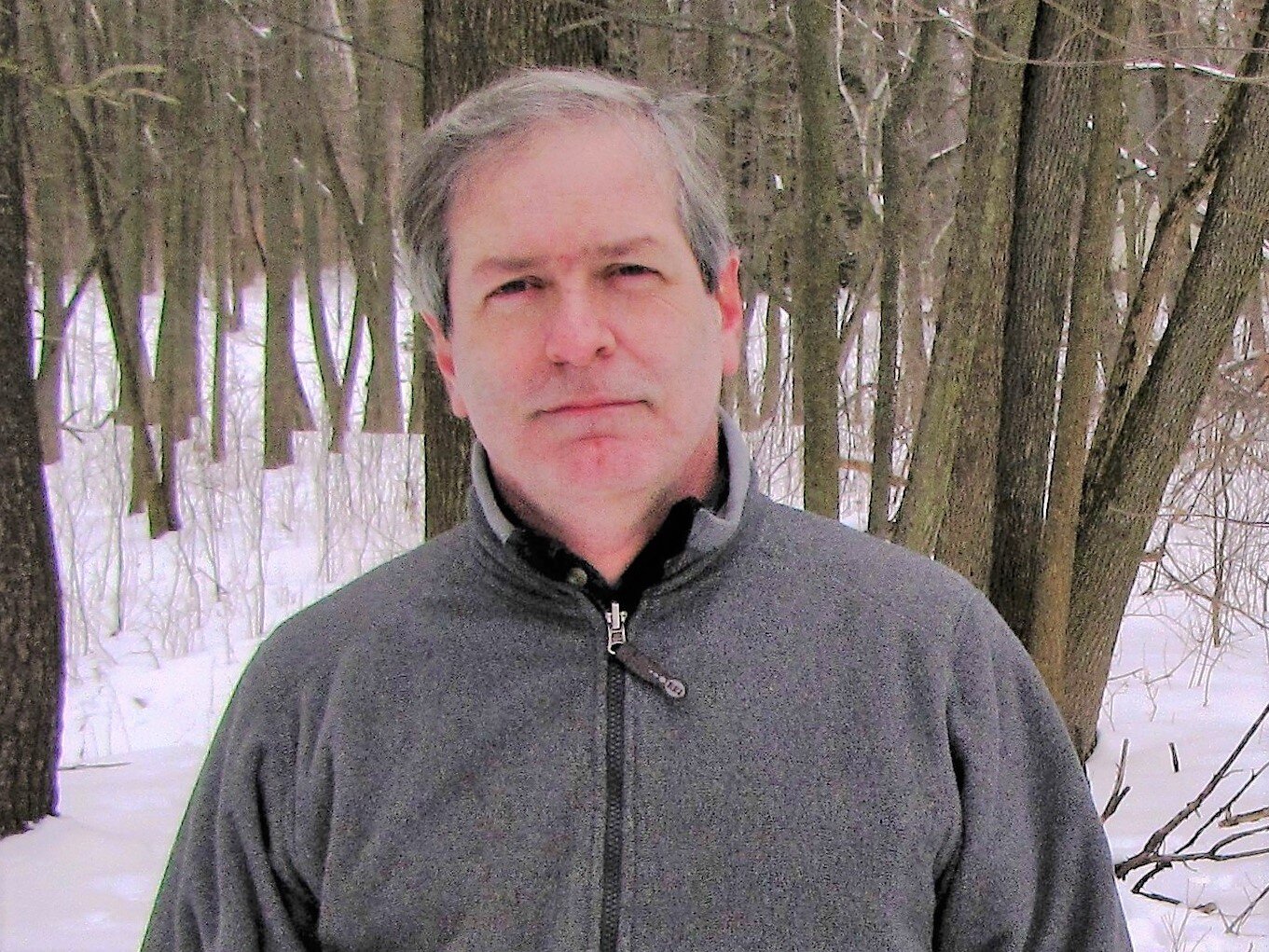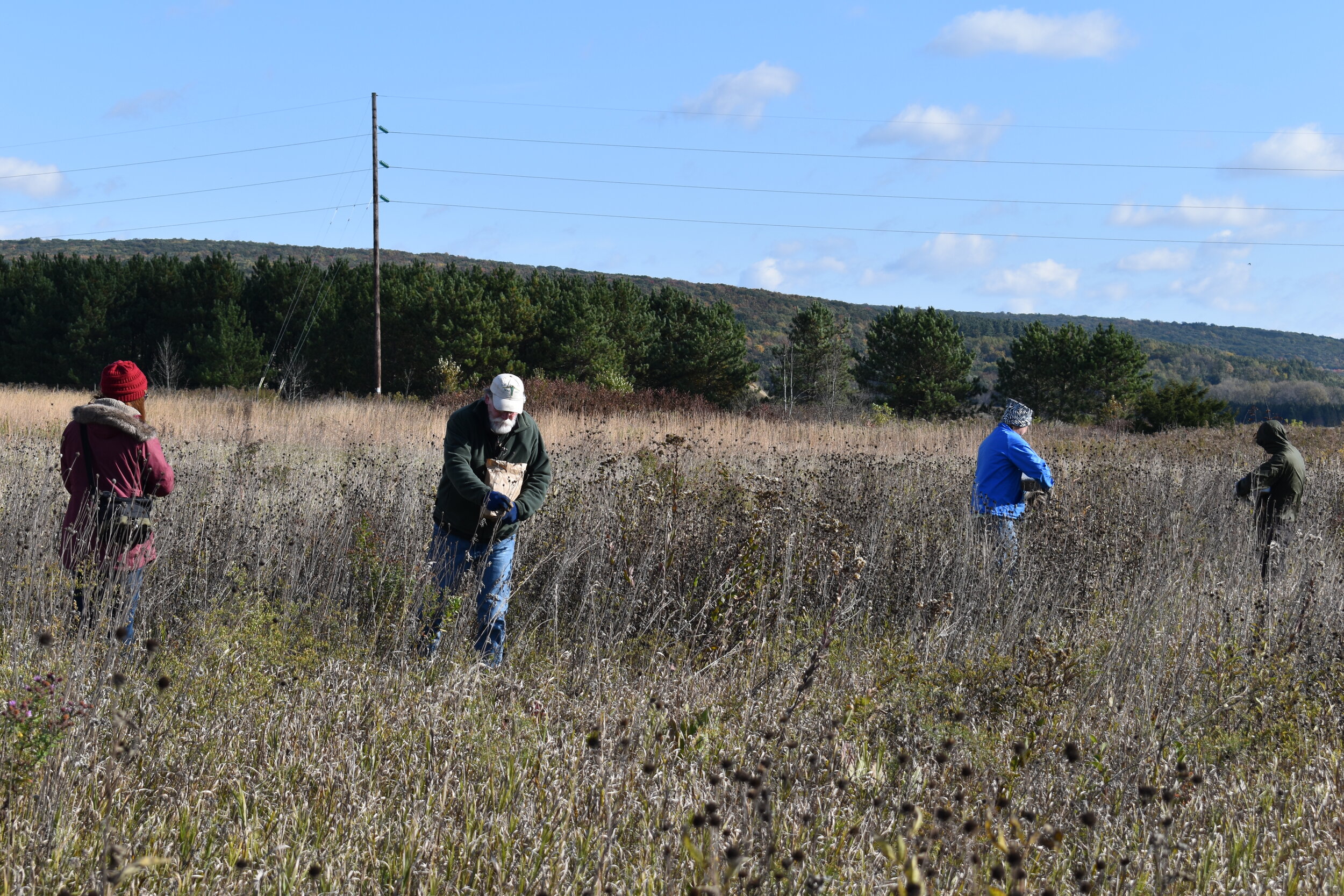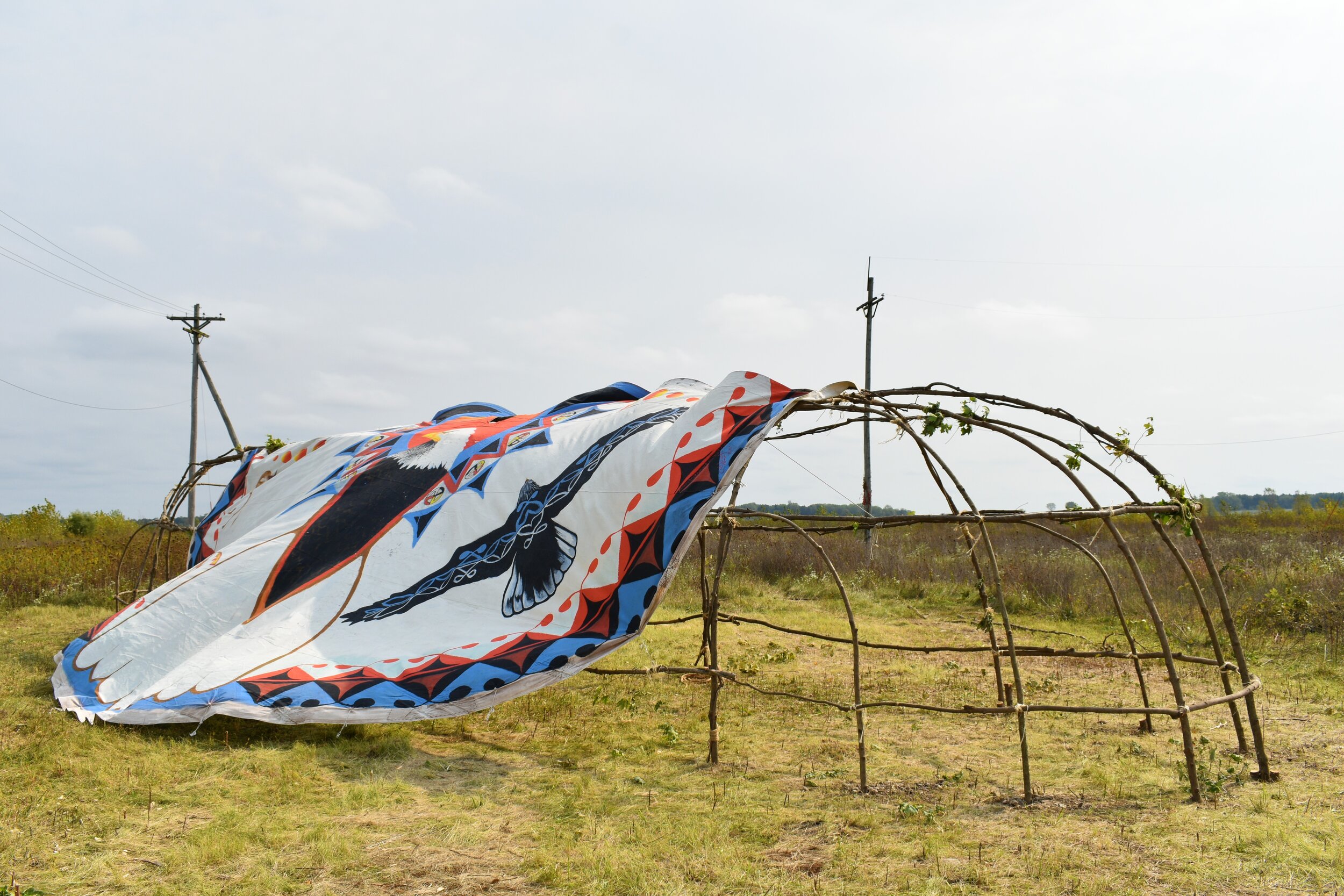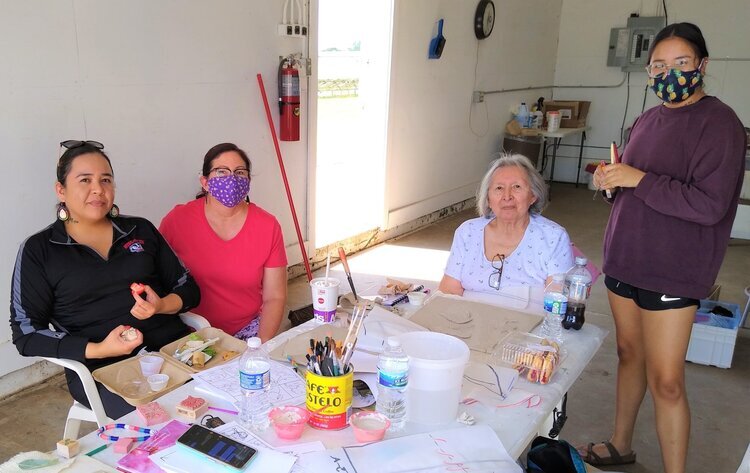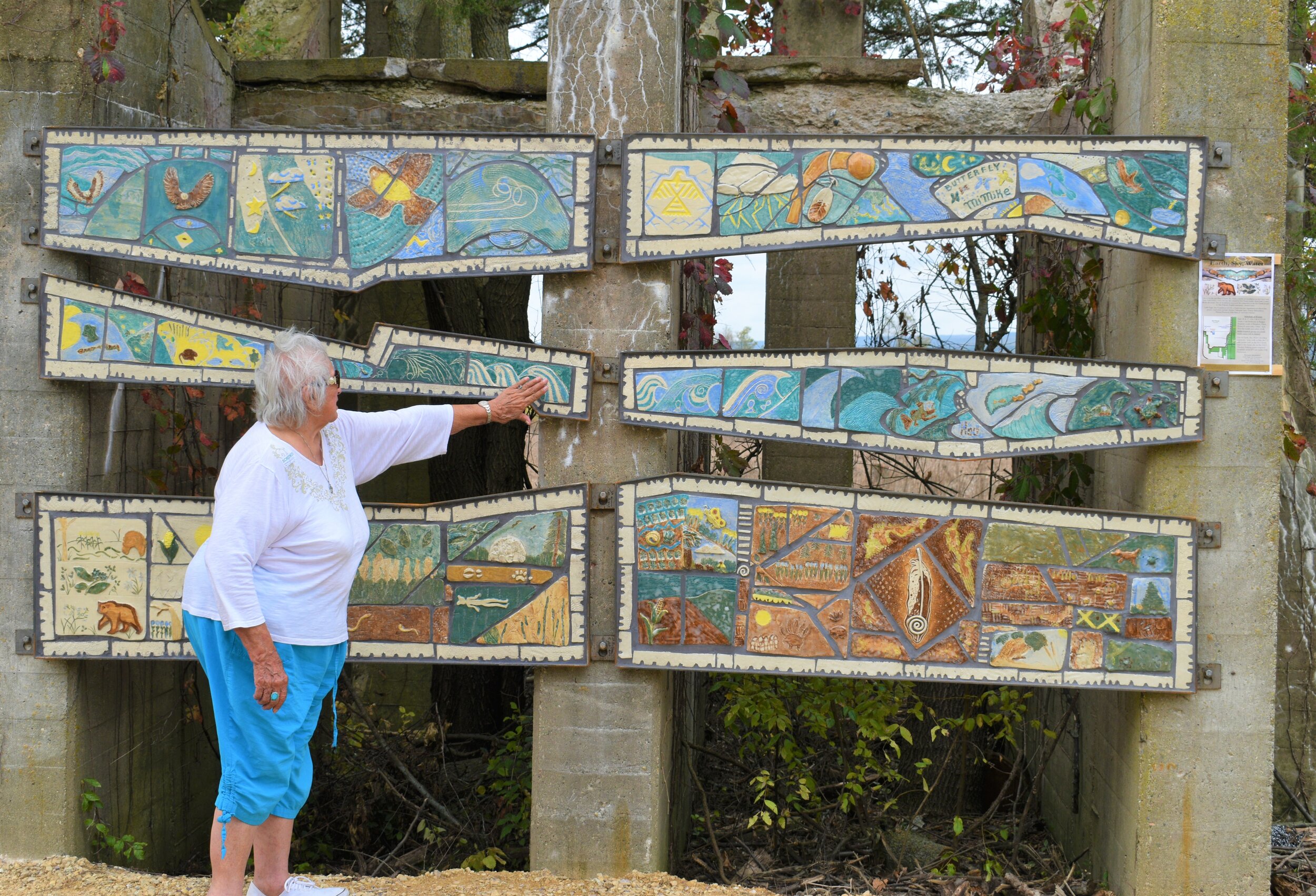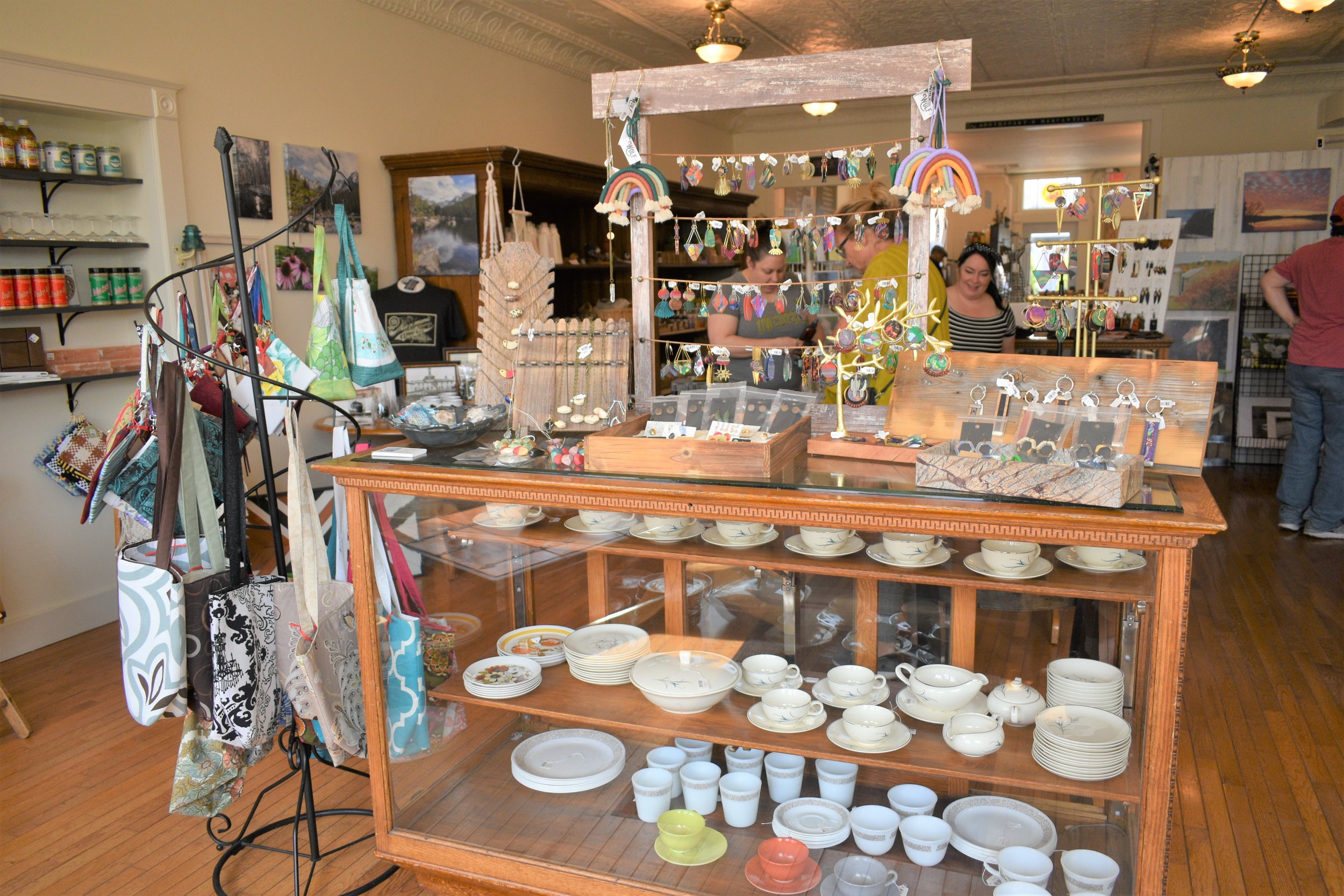Healing the Sacred Earth
It is good for us, too, to touch the earth. We, and our children, need the chance to walk upon the sacred earth, this final abiding place of all that lives. We must preserve our sacred places in order to know our place in time, our reach to eternity.
—N. Scott Momaday, “Sacred Places”
The sun is rising and the sky is brazen blue. A dozen volunteers have shown up on this unseasonably cold October morning in southern Wisconsin. As a sharp wind blows from the northwest, we turn collars up, pull hoods over heads, and await late arrivals. We are standing next to a rusty chain-link fence at the entrance of what for six decades was a major U.S. military production facility, the Badger Army Ammunition Plant. Our modest group has come here today to help heal this Sacred Earth.
We have come together on the occasion of the inaugural recognition of Indigenous Peoples’ Day in Sauk County. The county is named after the allied Sauk (Sac) and Fox (Meskwaki) tribes who, driven from the western Great Lakes, inhabited a village and cultivated lands along the nearby Wisconsin River in the 1700s. The Sauk and Fox then migrated to lands downstream along the Mississippi River in what is now Illinois and Iowa.
We are here at the invitation, and at the service, of the Hoocąk (Ho-Chunk, meaning People of the sacred voice). The place where we gather belongs to the Nation’s ancestral territory. Through a series of treaties contrived in the 1820s and 1830s, the Hoocąk lost their hold on their homelands. But the story of the Nation is one of determined resistance and resilience. In 2014 the Hoocąk acquired 1,550 acres of the former Badger Plant land, taking it back into their care. Indigenous Peoples’ Day in fact comprises three days of service, celebration, and ceremony. Ours is the kick-off event of the first day, a “Day of Restoration: Healing our Mother Earth and ourselves through hands-on activities.” We will gather seeds of native prairie plants for the Nation to use in its land restoration work.
The Badger Army Ammunition Plant occupied 7,354 acres, including a significant portion of the historic Sauk Prairie, a 14,000-acre outlier at the northeast edge of the mid-continent’s tallgrass prairie. Only a few tiny, isolated remnants of the Sauk Prairie remain. Beginning in the early 1840s, farmers from the eastern United States, Switzerland, Germany, and other parts of Western Europe converted almost all of the prairie and associated oak savannah to agriculture and homesteads. A century later, in the months following the bombing of Pearl Harbor, the U.S. Department of Defense took over some eighty farmsteads and other properties to construct the “Badger Ordnance Works.” At the height of production in World War II, ten thousand workers—including many Hoocąk members—worked around-the-clock shifts in this rural munitions factory, turning out smokeless powder, acid, and propellant for the war effort. As recently as 2007, fourteen hundred buildings, most of them long dormant and deteriorating, barnacled the land. Their remains, including the asbestos siding and lead paint used in their construction, are now entombed in a secure landfill on the other side of the Badger lands.
On this chill morning, we all need to get our blood and bodies moving. But before the work begins, we introduce ourselves and say a few words about what brought us here today. Some of us are veterans of twenty-five years of community effort to transition this place to a conservation future. We are here out of dogged—some might say irrational—persistence. We can hardly remember a time when the reimagining of “Badger” was not a part of our daily lives and consciousness. Others are fresh faces and therefore deeply appreciated by us old hands. One first-timer says, “I saw the notice about Indigenous Peoples’ Day. I knew about Badger and just wanted to do something.”
In fact, only one among us is Hoocąk. Kristin WhiteEagle is the last to introduce herself. Kristin has played a key role in organizing the three days of events. She is an elected representative in the Hoocąk tribal legislature. She is also an elected member of the county board of supervisors, the first Native American to so serve. Kristin offers a welcome and remarks. She speaks of the value of this land to the Hoocąk, and of its spiritual significance. “We are seeing a change in the world. We must look to the future and think about the generations to come. What we need is what this place can give.” Kristin stands at the meeting place of tradition and transformation, Native American and Euro-American experience, cultural trauma and reconciliation. So, in some manner, do we all. Perhaps that is what brought everyone here today.
Our troupe walks across an expanse of decaying parking lot, where dozens of buses once disgorged workers coming to the plant from a hundred miles around. We all pause spontaneously at a spot where a single eight-foot stalk of Big Bluestem, wearing its fall colors of burnt red and royal purple, sprouts forth triumphantly from a four-inch hole in the asphalt. This sovereign citizen of the tallgrass prairie has found a roothold, tenuous yet tenacious, in its ancestral territory. We will collect seeds of Big Bluestem and several other species. Fragrant bunched tubules of Bergamot and fluffy seedlets of Stiff Goldenrod. Tiny black dots of Black-Eyed Susan and anise-scented caps of Grey Headed Coneflower. After a very wet summer, all the prairie plants are lush. The coppery-gold seed heads of Indian Grass stand out especially high, like long plumes. No species reaches out so irresistibly to the human hand. Its seed zips off its high stem so satisfyingly. Kristin muses that we ought to petition for a name change. Let’s call it “Indigenous Grass.”
Although cold, it is a sweet morning. My friend Mike is out with his teenage daughter Eva. At first, she stayed warm in the car, seemingly aloof and unenthusiastic about this whole exercise. But she emerged when the collecting commenced, and now she and her father are laughing in the tallgrass. The two young first-timer guys are in competition to fill the most paper sacks with seed. Randy, who oversees the Hoocąk land restoration work, beams as the bags of genetic wealth accumulate. It is his—and the Nation’s—necessary raw material for next year’s planting. I come upon a patch of tall, scratchy-leaved Compass Plant. It’s not among our target species today, but I can’t resist adding it to the seed mix in my bag. Handsome, deep-rooted, sun flowery Compass Plant, who brings such outrageous yellow joy to our summer. The world needs more of you.
Indeed, it does. For there is some bittersweet in here as well. We are collecting seeds, not from a native prairie remnant, but from a patch we planted fifteen years before, a decade before the Hoocąk was able to secure this land. Over time, the odd bits of remaining intact prairie in this area have blinked out one by one. Ideally, we would collect from whatever hanger-on prairie pieces we can find. We would try to sustain as much local genetic diversity-as wide a kinship of evolutionary prairie relations-as possible. But we are sampling from samples now. We keep losing our vestiges of prairie. We keep losing our connections with land, with one another, with ancestors, with all the living beings of the land, and with all their ancestors. We keep losing ourselves.
Here at Sacred Earth we may begin a healing, and we may come to reclaim ourselves.
What’s in a name? Here, everything. After internal deliberation, elders of the Hoocąk (Ho-Chunk) bestowed a name upon this place: Maa Wákąčąk (pronounced Maa-wah’-kun-chunk), meaning sacred Earth/land.
The land here sits in a basin of sorts. To the north, the Baraboo Hills rise seven hundred feet above the surrounding landscape. The hard-pink quartzite of the hills dates to the Precambrian, more than a billion and a half years ago. To the south and west, bluffs of 500-million-year old sandstone line the horizon. To the east, a modest ridge—the Johnstown Moraine—marks the furthest extent of the last glacier’s advance in this area, some 24,600 years ago. With these geological features on display and their scales of time overlaid, there is no better place to tell the story of how this land came to be. It is Wisconsin’s geological umbilicus, its narrative navel.
Adjacent to Maa Wákąčąk, just over the rim of the Baraboo Hills, sits Devil’s Lake. The lake, perched in a gorge blocked on both ends by the glacial moraine, is the main attraction in a state park that is among the most popular in the Midwest. Two million people come every year to enjoy the lake’s cool waters and hike its precipitous trails through the surrounding hills.
The lake has always been a vital feature in the Hoocąk landscape, culture, and cosmology. The Hoocąk hold stories of how this deep lake and its boulder-strewn bowl came to be. Earthmaker created a giant water spirit whose body heat melted ancient snows and ice, allowing the waters to flow. The water spirit carved channels for the waters, and then plunged deep into the earth where the lake now sits. From a distance the Hoocąk heard the great shock of the impact and followed the sound to its sacred source. Later, the Thunderbird (Wakąja) and the Water Spirits (Wakjexira) waged a war at the lake. In the course of their terrible struggle, boulders were torn from the surrounding bluffs and cast up from beneath the waters. For the Hoocąk and their tribal kin, this was a homing point between the Great Lakes and the Mississippi River. It was, and is, Te Wákąčąk (Day-wah’-kun-chunk), meaning Spirit Lake, Holy Lake, Sacred Lake, or Lake of the Spirit Voices.
The Hoocąk have now returned to Sacred Earth. And the Sacred Earth has returned to Hoocąk.
The trail back has been long and unimaginably arduous. Two treaties, drawn up in 1829 and 1832, removed the Hoocąk from other portions of what are now southern Wisconsin and northern Illinois. In 1837 a third and especially egregious and fraudulent treaty forced the Hoocąk from this area, and out of Wisconsin entirely. They were exiled to a “Neutral Ground” across the Mississippi River in northeast Iowa and adjacent Minnesota, pressed precariously between the rivaling Sauk and Fox to the south and Dakota to the north. That proved untenable, especially as further waves of European settlers came into the Iowa Territory. Over the next three decades, the Hoocąk were continually uprooted and relocated: to Long Prairie in central Minnesota in 1848; to Blue Earth in southern Minnesota in 1855; to Crow Creek in South Dakota in 1863. Forced to march to Crow Creek in the severe winter, more than six hundred Hoocąk perished. Finally, in 1865 the Hoocąk sold their Crow Creek holdings, purchased land from the Omaha along the Missouri River in eastern Nebraska, and established the Nebraska Winnebago Reservation. (The Wisconsin portion of the tribe reclaimed its traditional name Ho-Chunk in 1994.)
Through all these episodes of displacement, and in the face of regular removals from Wisconsin by the U.S. Army, members of the Hoocąk resisted. A people of the prairie/woodland border, many Hoocąk never felt at home in the northern forests of Minnesota or the treeless plains of Dakota and Nebraska. Some simply refused to leave Wisconsin, individuals and families holding on amid the colonized farmlands and small towns. Some peeled away from the trails of removal, returning to western Wisconsin overland or via the Missouri and Mississippi Rivers. Once returned, many purchased plots of their ancestral lands through fee simple title. Scattered about the upper Midwest from rural Wisconsin, Iowa, and Minnesota to Chicago and other cities, members of the Hoocąk, unlike other Wisconsin tribes, do not have a land base in a single contiguous reservation.
Jon Greendeer served as the tribe’s elected president when the Sacred Earth came back into the arms of the Hoocąk. Of the tribe’s dispersed land base, he said, “If your goal is to preserve your people, your culture, your language, it’s the worst thing on Earth. Our families have been ripped apart, our communities have been disenfranchised, our stories have been lost, our villages are no longer. We’ve lost a lot.” Greendeer worked tirelessly to secure the land transfer. Maa Wákąčąk is now the largest piece of land the Hoocąk have regained in its ancestral territory. Its acquisition by the Hoocąk also marked the first time in American history that land controlled by the U.S. Department of Defense was returned to a Native American tribe.
Sacred Earth might seem a far stretch of a name for this place. The Sauk Prairie of 1837 has disappeared. Most of its native plants have been banished, and many of its animals are missing. Its prairie soils were long ago turned up, plowed again and again and again, paved over, built over, fouled with the toxic by-products of industrial production. Its surface waters were ditched and drained, diverted and buried. Plumes of contaminated groundwater now course beneath the surface of Sacred Earth. A busy highway forms the western boundary of the property. A private company, grandfathered in when the land transferred, occupies several buildings. There they test rocket engine technologies and offer science instruction to Hoocąk youth. In short, this is a worldly place, carrying harsh stories of loss and damage. One might say that reimagining it as sacred land is harder than rocket science.
And yet, the land is rendered sacred by cultural memory and story, history and intent. It is a place, however degraded and burdened by its troubled past, of continuity and renewal. Maa Wákąčąk carries this conviction: that all places, by the very fact of their existence, and by the relations we recognize and honor and build, bear the sacred. In gathering these prairie seeds together, we take a small but crucial step in reestablishing our kinship ties with the plants and animals, between people and the land, between our different human communities, between all the generations behind us and all those yet to come. We consecrate the space—we make it sacred together. This morning we walk softly upon the land, quietly collecting minute seeds of potential prairie. But from this small piece of Sacred Earth, shock waves may ripple forth. The land shakes with the power of Waterspirits and the cries of Thunderbirds.
The story of Sacred Earth involves multiple episodes of painful transformation and alienation. In signing the spurious 1837 treaty, the Hoocąk delegates believed they had agreed to terms that granted the tribe eight years to leave Wisconsin. They were later informed that the treaty gave them eight months. In 1942, following the bombing of Pearl Harbor, the farming families of Sauk Prairie were allowed three months to auction off their farms, equipment, and livestock, and to vacate their properties. (In an ironic inversion of cultural stratigraphy, Maa Wákąčąk now hosts a modest memorial to the farmers who gave up their land to the war effort.) As the Cold War wound down, and the Badger Plant stayed still, U.S. Army workers signed up for unemployment. With the decommissioning of the munitions plant in 1997, years of difficult public controversy about its future commenced.
That future was finally defined through an intense process of community engagement, education, and dialogue. That conversation included the Hoocąk; federal, state, and local governments; non-profit organizations and businesses; educators and neighboring landowners. The resulting consensus document included a clear directive: future uses and activities should “contribute to the reconciliation and resolution of past conflicts involving the loss and contamination of the natural environment, the displacement of Native Americans and Euro-American farmers, and the effects of war.”
It is never easy to turn a page on pain, much less on generations of trauma. But all pledged to try.
And it not easy to know how to be an ally in that effort, how to help renew kinship. But perhaps it begins with small acts that reconstitute our connections in the land.
Here, renewal may begin with silence, and listening with respect to the stories of the land. Those stories are layered across time, from the Precambrian quartzite to the present. They include the accounts of ancient oceans and upheavals, of rocks tumbling against long-ago seashores, of recurring ice ages and changing climates, of the ever-changing host of living beings. They include tales of all the people who have come and gone and returned and rooted themselves. Like the long-lost prairie, these stories exist in fragmented and isolated remnants. Many stories are just barely hanging on. Others have blinked out forever. But that is why we are here today. Together, we might be able to collect just enough bits of story to plant and grow a new chapter.
Here, renewal may also begin with gathering these seeds to establish a fresh prairie. There is a fine debate unfolding these days about approaches to ecological restoration under conditions of accelerating climate change. Our region of southern Wisconsin is seeing the effects. Over the past century, average temperatures here have risen about two degrees. Extreme precipitation and disastrous floods occur with increasing frequency. Why restore prairie when the world in which the prairie evolved is being so quickly and radically transformed? How can we restore prairie when the climate we humans are disrupting will make such efforts obsolete—and when our communities are divided and our social systems in turmoil? Is “restoring” a native ecosystem in fact an exercise in futility? How can we plant a future that bears no apparent resemblance or connection to the past?
On this wind-chilled morning, collecting seeds, next to an old parking lot with Big Bluestem sprouting through cracks, we can imagine answers. We can see a prairie sucking carbon back into its soils, filtering water through its roots, providing a home to meadowlarks and bobolinks and monarchs and rusty-patched bumble bees, and, maybe, someday, to elk and bison and prairie chickens. We can listen to the words of the Hoocąk, the People of the Sacred or Big Voice, calling upon Mąą’ų́ną (Maona, Earthmaker) and inviting back the mos-ka’ (prairie). We can be allies in this work by making common cause, knowing that, while facing our shared and uncertain future, we must honor our kinship more than ever.
This essay is published in cooperation with the Center for Humans and Nature and cross-posted in the Fall 2020 issue of its on-line journal Minding Nature.
Read more on Maa Wákąčąk by clicking on these links; http://bit.ly/DayofRestoration -https://bit.ly/Ho-ChunkLandGreatSaukTrail - https://bit.ly/HoocąkEarthSkyWaterMural2.
Photos by Paul Arentz-DriftlessNow.com
Acknowledgements
I am grateful to all the members of the Hoocąk who have shared their knowledge and understanding of Maa Wákąčąk and have worked so persistently for its renewal. My special thanks to Rhonda Funmaker, Jon Greendeer, the late Truman Lowe, Bill Quackenbush, Jodee Smith, Melanie Tallmadge Sainz, Samantha Skenadore, and Kristin WhiteEagle. My thanks also to Randy Poelma of Hoocąk Division of Environmental Health; and to all the members of the Sauk Prairie Conservation Alliance.
About the author
Curt Meine is a conservation biologist, historian, and writer. He is Senior Fellow at the Center for Humans and Nature. In addition, he is Senior Fellow with the Aldo Leopold Foundation, Research Associate with the International Crane Foundation, a Fellow with the Wisconsin Academy of Sciences, Art & Letters, and Adjunct Associate Professor in the Department of Forest and Wildlife Ecology at the University of Wisconsin-Madison. He is active locally as a founding member of the Sauk Prairie Conservation Alliance in Sauk County, Wisconsin.
